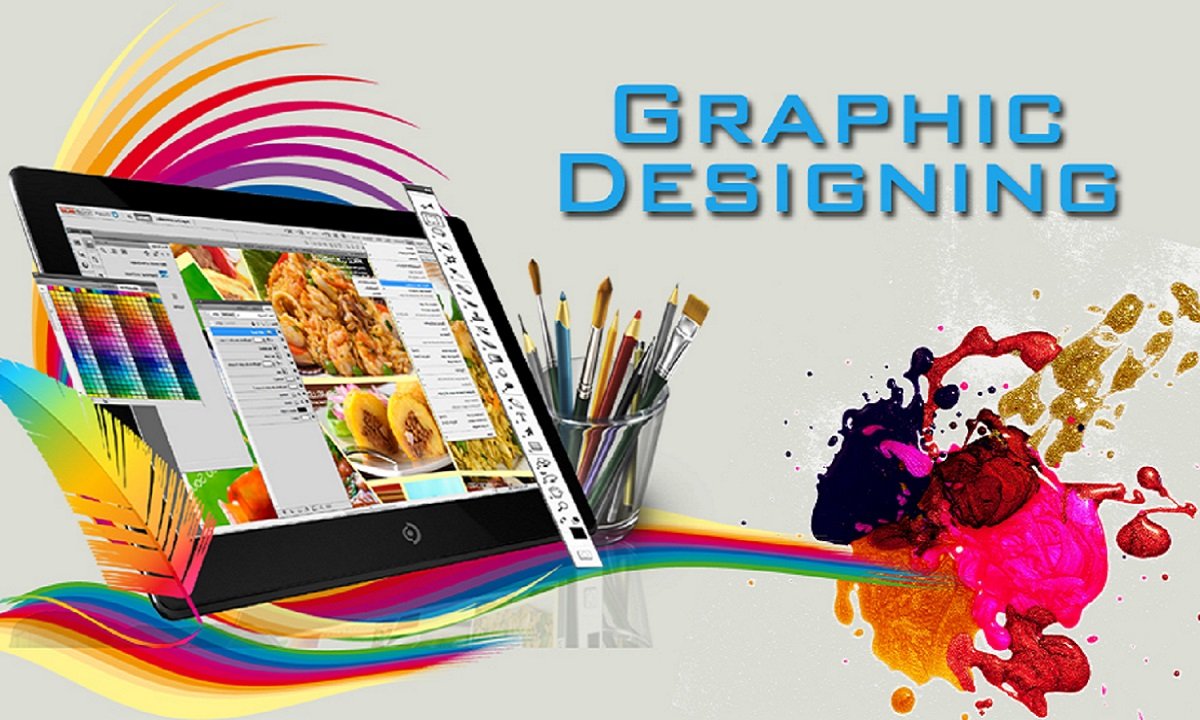Graphic Designing
Graphic design is a creative discipline that involves using visual elements, typography, and layout techniques to communicate and convey ideas or messages effectively. It encompasses a wide range of mediums, including print, digital, and multimedia, and plays a crucial role in shaping the visual identity of brands, products, and services. Graphic designers utilize their artistic skills and technical expertise to design logos, posters, websites, packaging, advertisements, and other visual materials. They carefully consider factors such as color theory, composition, and user experience to create visually appealing and impactful designs that resonate with the target audience and achieve the desired objectives.

Importance of Graphic Designing
Graphic designing is a powerful art form that combines creativity, technology, and visual communication to convey messages, ideas, and concepts. It involves the creation and manipulation of images, typography, and other visual elements to produce visually appealing and impactful designs. Graphic designers use their artistic skills and technical expertise to communicate messages effectively across various mediums.

Graphic Designing: Unleashing Creativity and Visual Communication
Introduction to Graphic Designing
Graphic designing is a powerful art form that combines creativity, technology, and visual communication to convey messages, ideas, and concepts. It involves the creation and manipulation of images, typography, and other visual elements to produce visually appealing and impactful designs. Graphic designers use their artistic skills and technical expertise to communicate messages effectively across various mediums.
The Importance of Graphic Designing
Graphic designing plays a crucial role in various industries and sectors. Here are some key reasons why it is important:
-
Brand Identity: Graphic design is essential for building a strong brand identity. Through the use of logos, color schemes, typography, and visual elements, graphic designers create brand identities that resonate with the target audience and differentiate businesses from competitors.
-
Effective Communication: Visual elements have the power to convey messages quickly and effectively. Graphic designers utilize their skills to create visually compelling designs that communicate complex ideas and concepts in a concise and understandable manner.
-
Enhanced User Experience: In today’s digital age, user experience is paramount. Graphic designers play a crucial role in designing intuitive and visually appealing interfaces for websites, mobile apps, and other digital platforms, ensuring a seamless user experience.
-
Marketing and Advertising: Graphic design is integral to marketing and advertising campaigns. Eye-catching and visually appealing designs attract attention, engage the audience, and contribute to the success of marketing initiatives.
-
Print and Digital Media: Graphic design is involved in various print and digital media applications, including brochures, magazines, social media graphics, banners, websites, and more. It ensures that the content is visually appealing and effectively communicates the desired message.
Skills and Tools for Graphic Designing
To excel in graphic designing, professionals need a combination of artistic skills and technical knowledge. Here are some key skills and tools commonly used in the field:
Skills:
-
Creativity: Graphic designers must have a strong creative flair to come up with unique and visually appealing designs that capture the essence of the message or brand.
-
Typography: A solid understanding of typography is crucial for creating visually appealing and readable designs. Knowing how to choose and manipulate fonts effectively is essential.
-
Color Theory: Graphic designers should have a good understanding of color theory to create harmonious and visually pleasing color schemes that evoke the desired emotions and convey the intended message.
-
Layout and Composition: Designers must have a sense of balance, proportion, and visual hierarchy to create well-structured and aesthetically pleasing layouts.
-
Attention to Detail: Paying attention to details ensures accuracy and professionalism in graphic designs. Small nuances can significantly impact the overall quality of the design.
Tools:
-
Adobe Creative Suite: Adobe Photoshop, Illustrator, and InDesign are industry-standard software used for graphic designing. They offer a wide range of tools and features to create and manipulate designs.
-
Sketch: Sketch is a popular vector-based design tool specifically designed for interface and user experience design. It allows designers to create digital designs for websites and mobile apps.
-
Canva: Canva is a user-friendly online design platform that provides templates, graphics, and a drag-and-drop interface for creating social media graphics, presentations, posters, and more.
-
Procreate: Procreate is a digital drawing and painting app designed for iPad. It offers a wide range of brushes and tools, making it a favorite among digital artists and illustrators.
FAQs
Q: What is the role of graphic design in web design? A: Graphic design plays a significant role in web design by creating visually appealing layouts, choosing appropriate color schemes, selecting fonts, and designing user interfaces. It enhances the user experience and contributes to the overall aesthetics and usability of websites.
Q: How can graphic design benefit small businesses? A: Graphic design can benefit small businesses in multiple ways. It helps establish a professional brand identity, enhances marketing materials, attracts customers, and communicates the brand’s message effectively.
Q: What is the difference between graphic design and visual communication design? A: Graphic design focuses on creating visual elements and layouts for various mediums, while visual communication design goes beyond visuals and incorporates other elements such as motion graphics, animation, and interactive designs to communicate messages effectively.
Q: Can graphic design be self-taught? A: Yes, graphic design can be self-taught to a certain extent. There are numerous online resources, tutorials, and design communities that can help individuals learn and improve their graphic design skills. However, formal education or professional training can provide a more comprehensive understanding of design principles and industry practices.
Q: How does graphic design contribute to branding? A: Graphic design is a vital component of branding as it helps create brand identities, logos, and visual elements that reflect the brand’s personality and values. It ensures consistency and coherence across all brand materials, strengthening brand recognition and recall.
Conclusion
Graphic designing is a versatile and impactful discipline that brings creativity and visual communication together. From brand identities to marketing materials, graphic design plays a vital role in conveying messages, enhancing user experiences, and establishing strong visual identities. With the right skills, tools, and creativity, graphic designers can unleash their potential to create compelling and visually stunning designs.
